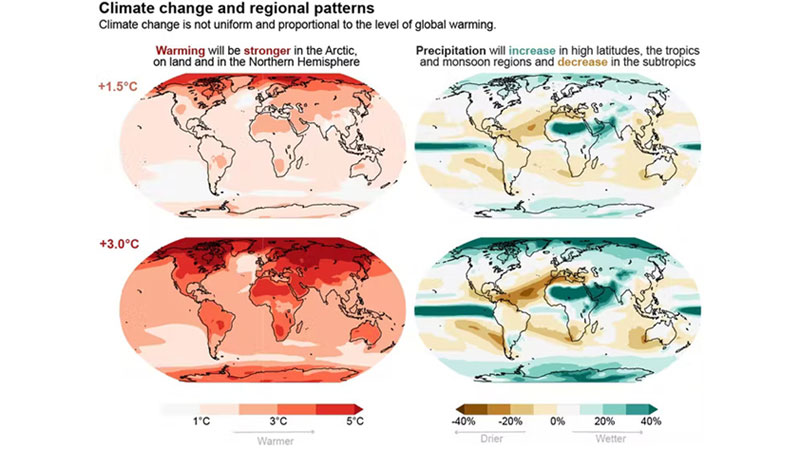
Powerful storms triggering flash floods and deluge across many countries including India is killing hundreds of people and live stocks with heavy commercial losses are reported more frequently now, than it was ever. The impact of climate change on extreme water-related events like this is becoming increasingly evident. The storms in the U.S. followed extreme flooding this summer in India and Australia and last year in Western Europe.
Studies by scientists around the world show that the water cycle has been intensifying and will continue to intensify as the planet warms. An international climate assessment report for Intergovernmental Panel on Climate Change lays out the details.
It documented an increase in both wet extremes, including more intense rainfall over most regions, and dry extremes, including drying in the Mediterranean, south-western Australia, south-western South America, South Africa and western North America and several Asian countries including India. It also shows that both wet and dry extremes will continue to increase with future warming.
Water cycles through the environment, moving between the atmosphere, oceans, lands, reservoirs and glaciers. It might fall as rain or snow, seep into the ground, run into a waterway, join the ocean, freeze or evaporate back into the atmosphere. Plants also take up water from the ground and release it through transpiration from their leaves. In recent decades, there has been an overall increase in the rates of precipitation and evaporation.
A number of factors are intensifying the water cycle, but one of the most important is warming temperatures raise the upper limit on the amount of moisture in the air. That increases the potential for more rain. This aspect of climate change is confirmed across all studies and evidence. It is expected from basic physics, projected by computer models, and it already shows up in the observational data as a general increase of rainfall intensity with warming temperatures. Understanding this and other changes in the water cycle is important for more than preparing for disasters. Water is an essential resource for all ecosystems and human societies, and particularly agriculture.
An intensifying water cycle means that both wet and dry extremes and the general variability of the water cycle will increase, although not uniformly around the globe. Rainfall intensity is expected to increase for most land areas, but the largest increases in dryness are expected in the Mediterranean, Southwestern South America and western North America with some parts of South Asia.
Globally, daily extreme precipitation events will likely intensify by about 7% for every 1 degree Celsius (1.8 degrees Fahrenheit) that global temperatures rise. Many other important aspects of the water cycle will also change in addition to extremes as global temperatures increase including reductions in mountain glaciers, decreasing duration of seasonal snow cover, earlier snowmelt and contrasting changes in monsoon rains across different regions, which will impact the water resources of billions of people.
The scientific evidence clearly tells that limiting global warming to the Paris Agreement target of 1.5 C (2.7 F) will require immediate, rapid and large-scale reductions in greenhouse gas emissions. Regardless of any specific target, it is clear that the severity of climate change impacts is closely linked to greenhouse gas emissions: Reducing emissions will reduce impacts. Every fraction of a degree matters.
(source: Smart Water Magazine)